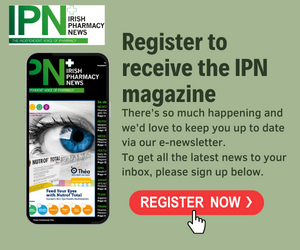Thanks to the team at totalhealth and Haven Pharmacies for this month’s Topic Team Training: Iron Deficiency. In this series of articles, we provide pharmacists with information to develop and implement OTC team training sessions, aimed at ensuring safe and suitable product recommendations and advice for customers and patients.
Iron’s Role in the Body
Iron is a mineral used in the production of haemoglobin, a protein in red blood cells that carries oxygen from the lungs around the body, and myoglobin, a protein that carries oxygen to muscle tissues. Iron is also required to produce certain hormones, contribute to a healthy immune system, as well as being crucial to foetal and infant brain development.
Iron Deficiency
Most people absorb the required amount of iron from their diets. A lack of suitable iron is called iron deficiency. It affects people of all ages, but there are particular situations where people are at increased risk of iron deficiency:
• Pregnancy
• Heavy Periods
• Bleeding in the gastrointestinal tract
• Chronic Kidney Disease
• Obesity.
It is very rare for a diet low in iron to cause iron deficiency; however, a low-iron diet combined with one of the conditions above can increase the risk of iron deficiency. Iron deficiency can be referred to as anaemia, one of the most common nutritional deficiencies in the world.
Symptoms of Low Iron
Symptoms of iron deficiency may not be apparent until depletion is significant. Symptoms may include:
• Poor cognitive functioning
• Fatigue
• Poor condition of hair, skin, and nails
• Shortness of breath or palpitations
• Pale skin
• Slow healing of wounds
• Restless Leg Syndrome.
Diagnosis And Treatment
Iron Deficiency is diagnosed by blood tests for haemoglobin levels. A GP may recommend prescription iron tablets for those with low haemoglobin or recommend OTC supplements. Those who have been recommended to take supplements should be advised to take them on an empty stomach with a drink containing vitamin C, such as orange juice. This is because iron is better and more easily absorbed without food. Vitamin C improves the absorption of iron. Those taking iron supplements should also be made aware of the possible side-effects, most of which should be eased by taking it as directed:
• Stomach pain or discomfort
• Nausea
• Diarrhoea
• Constipation.
Side-effects usually ease as the body gets used to the supplement, therefore taking a smaller dose to build up tolerance rather than stopping altogether is advised. Trying a different supplement may also help ease side-effects.
Food Sources
A diet rich in iron is advisable for everyone. Good sources of iron include:
• Red meat
• Beans and pulses
• Nuts
• Dried fruit
• Fortified cereals.
Iron levels should be closely monitored by vegetarians and vegans, who should ensure they consume enough non-meat food sources of iron.
Precautions
Despite the importance of iron during infancy, children should never be given OTC iron supplements unless under the care of a doctor. They absorb iron differently than adults and iron supplements can be extremely dangerous.
Using WWHAM questions, refer patients to the pharmacist if:
• Iron is being requested for a child
• Patient is showing severe symptoms of iron deficiency
• Patient is taking any other medication, as iron may reduce the effectiveness of other medicines
• Patient is suffering from any medical condition, in particular Type 2 Diabetes
• Patient is on haemodialysis.
Consider:
Reflect on the following in assessing your own knowledge and your team’s training:
• Is your knowledge up to date on recommended iron intake?
• Do you know what patients should be referred to a GP?
• Does the team always follow WWHAM protocol?
• Are all staff confident and comfortable explaining the varying instructions and dosages for all iron supplements?
• Are all staff aware which patients should be referred to the pharmacist?
Key Points:
Ensure your team understands and is confident explaining the following:
• The various types of iron supplements and how they should be taken
• The potential side-effects of iron supplements and how best to avoid them
• The importance of vitamin C for iron absorption
• The food sources of iron
• WWHAM protocol and which patients must be referred to the pharmacist.
Actions:
Your checklist for Iron Deficiency advice should include:
• Your own knowledge is up to date, on recommended iron intake for all types of patients
• The appropriate training has been provided to all team members, and assessed, for example through observation or role play
• You have the appropriate range of products available
• WWHAM Protocol forms the basis of all interactions at the OTC counter
• Update your CPD record.
Read the full magazine: September IPN
Read our Latest News










